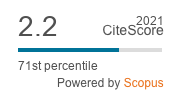Integration of Farming with Nonfarm Labor Employment Opportunities for Improving Income and Employment in Northeast Thailand
Abstract
The primary objective of this study was to appraise alternative uses of family resources for farm, nonfarm enterprises and off-farm work and their impact on production, employment and income of rural farm households in Khon Kaen Province. The study attempted to provide detail on household nonfarm and off-farm activities and their relationship to farm activities and examine their contribution to family income and their share of total labor utilization. The data used in this study were obtained from the Rural Off-Farm Employment Assessment Project in Thailand and from a supplemental survey conducted in Khon Kaen Province, Northeast Thailand for the Agricultural year 1980/1981. A poly-period linear programming model was developed to represent farm households within three different farm size groups for both rainfed and irrigated areas. The model contained the usual farm enterprises consistent with the major enterprises actually found in the study area. In addition, major nonfarm enterprises and off-farm employment opportunities were included in detail to test the complementary and competitiveness of farm, nonfarm enterprises and off-farm employment. The model specified an objective function to maximize net farm household income subject to land, labor, capital, subsistence needs and other constraints. Some of the findings of the study are as follows: (1). The composition of enterprise mix suggested by the programming solutions for the rainfed and irrigated farm households with every farm size class demonstrated the possibility for both rainfed and irrigated famers to camvine farm, nonfarm enterprises and off-farm work to achieve maximum net family income under existing family resource constraints with subsistence and living expenditure requirements. (2). Three common nonfarm enterprises of sericulture, silk weaving and sticky rice container making were recommended in the optimal plan for the rainfed farm households, whereas cotton weaving, mat making and basket making were recommended in the optimal plan for the irrigated farm household. (3). In the optimim solution, every farm size class of the rainfed and irrigated farm household, had some members (both males and females) with off-farm work. Without these farm employment opportunities, both rainfed and irrigated farm household would be worse off because their family net income and employment would decline substantially. Conversely, with the assumption of more off-farm employment opportunites the rainfed and irrigated farm household would have substantially higher family net income and employment. The model results also suggested that both rainfed and irrigated family labor always enthusiastically respond to an off-farm work offering a wage ranging form 24 to 35 baht per day (or more).Downloads
Published
01-01-1983
How to Cite
Priebprom, S. (1983). Integration of Farming with Nonfarm Labor Employment Opportunities for Improving Income and Employment in Northeast Thailand. Kasetsart Journal of Social Sciences, 4(1), 30–39. Retrieved from https://so04.tci-thaijo.org/index.php/kjss/article/view/243164
Issue
Section
Research articles
License
This is an open access article under the CC BY-NC-ND license http://creativecommons.org/licenses/by-nc-nd/4.0/









